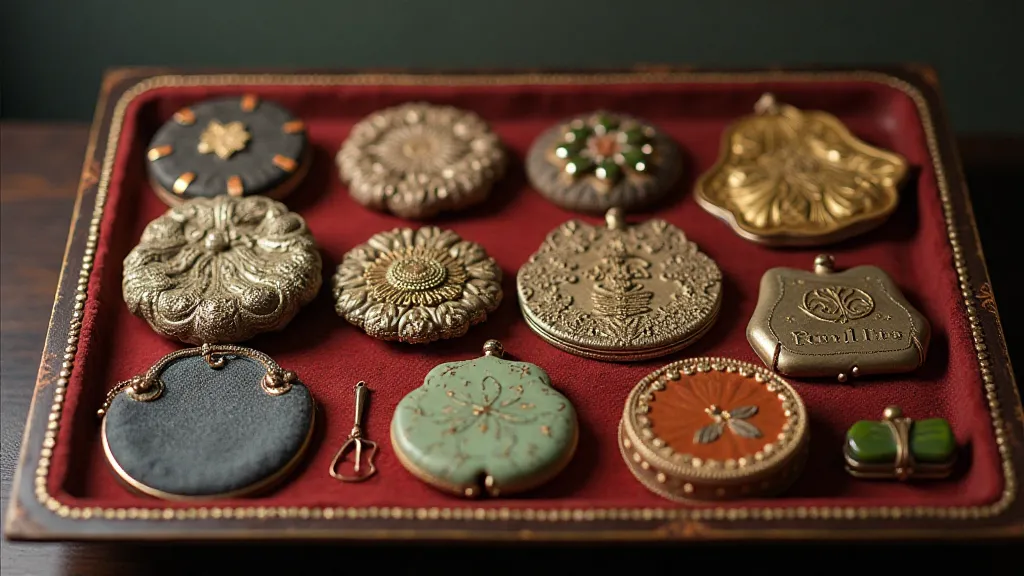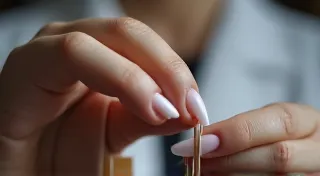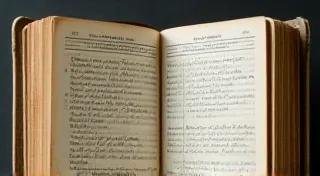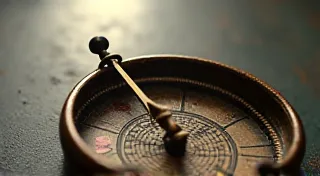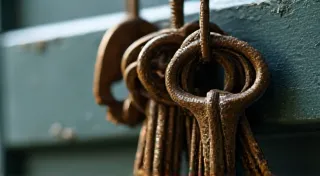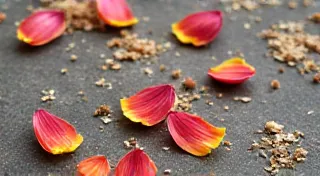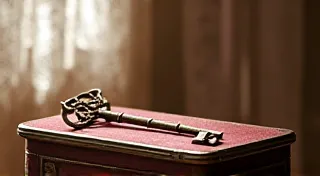A Portrait in Miniature: Evoking Character Through Coin Purse Design
There’s a quiet intimacy to collecting vintage coin purses. They're not the grand statement of a handbag, nor the utilitarian practicality of a wallet. Instead, they exist in a liminal space, a pocket-sized artifact offering a fragmented glimpse into a past life, a personality meticulously curated and expressed through design.
I remember finding my first truly captivating coin purse at a dusty antique market. It wasn't particularly rare – a simple, cream-colored satin pouch embroidered with a single, faded pansy. Yet, the artistry, the care taken in selecting the satin, the stitchwork...it whispered of a woman who appreciated beauty in the small things, a woman with an understated elegance. That single pansy wasn’t just a floral motif; it felt like a declaration of a soft, gentle spirit. That’s when I understood that coin purses were more than just receptacles for spare change; they were self-portraits in miniature.
The Language of Materials
The materials chosen for a vintage coin purse are arguably the first clue to its owner’s character. Think of the difference between a sturdy, brown leather pouch, suggesting a practical, perhaps outdoorsy, individual, versus a shimmering, beaded silk bag, likely belonging to someone who embraced glamour and evening events. The quality of the materials themselves also spoke volumes. A carefully chosen, hand-stitched leather suggests a level of investment and appreciation that a mass-produced, flimsy fabric simply couldn't convey. Often, the choice extended beyond mere function, reflecting broader trends in fashion and societal values. The rise and fall of certain materials throughout the decades paints a vivid picture of changing aesthetics and economic shifts, inviting a deeper understanding of the era in which the coin purse was created.
Early coin purses, particularly in the late 19th and early 20th centuries, were often crafted from practical materials: sturdy canvas, leather (often goat or pigskin), and simple cotton prints. As design evolved, certain materials became imbued with symbolic meaning; silk, for instance, was frequently associated with luxury and refinement. As the Art Deco era dawned, materials became more luxurious. Silk, velvet, and satin appeared more frequently, often embellished with intricate beadwork, embroidery, and delicate lace. The post-war years saw a boom in synthetic materials like nylon and vinyl, often used in bold, playful designs reflecting the era's optimistic spirit. These materials weren’t just functional; they were aesthetic choices, signaling a specific attitude toward style and affordability. The stories these materials tell often intertwine with broader societal shifts, making a single coin purse a surprisingly rich historical artifact.
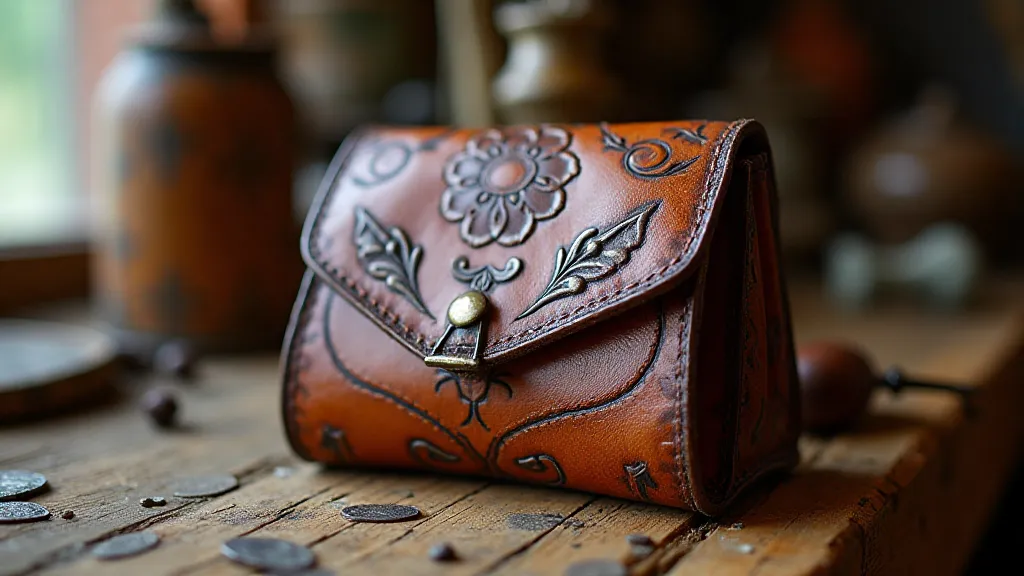
Embellishments and Expression
Beyond the core material, it's the embellishments that truly bring a vintage coin purse to life and provide deeper insight into its owner's personality. Consider the sheer variety: delicate hand-stitched embroidery depicting floral motifs or charming scenes; intricate beadwork arranged in geometric patterns or mimicking natural forms; applied patches of velvet, felt, or even scraps of lace. These weren’t just decorative elements; they were expressions of individuality. The deliberate choices in these embellishments – the colors, the motifs, the placement – offered a window into the owner’s personal tastes and aspirations. These details, often overlooked, speak volumes about the individual who treasured these small treasures.
During the Victorian era, sentimentality reigned supreme, and coin purses were often personalized with monograms, small portraits, or embroidered keepsakes – a lock of hair from a loved one, a miniature of a favorite pet. The Edwardian period embraced a softer, more romantic aesthetic, with coin purses adorned with delicate lace, ribbons, and pastel-colored beads. The 1920s, with their exuberance and Art Deco influence, brought bold geometric patterns, shimmering sequins, and metallic accents. Examining the details of these decorations offers a tangible connection to the past, allowing us to imagine the lives and stories of those who carried them. The dedication to detail is remarkable – each bead, each stitch, a testament to the value placed on these small objects. The way these embellishments were executed also reveals much about the skill and artistry of the craftspeople of the time. The choice to utilize certain decorative elements often mirrored prevailing artistic movements, serving as both personal expression and a reflection of broader cultural trends.
It's fascinating to consider how the presence or absence of certain features, like a specific type of clasp or hardware, can add another layer of understanding. If you'd like to delve deeper into the nuances of closures and their significance, you might find Echoes in Metal: The Significance of Hardware and Closures a fascinating read.
Shape and Form: A Reflection of Time
The shape of a vintage coin purse, too, contributes to its overall character. Early coin purses were often simple, rectangular pouches or small drawstring bags, reflecting practicality over fashion. As design evolved, we see a wider variety of shapes: rounded bellows purses, novelty purses shaped like animals or objects, and more structured, rectangular designs with snap closures or drawstrings. The change in shape mirrored shifting fashion trends and a growing interest in decorative details. The evolution of form is a visual representation of the changing values and priorities of each era, mirroring broader societal shifts.
The bellows purses, particularly popular in the 1930s and 1940s, were often made of luxurious materials like velvet or silk and featured intricate hand-painted or embroidered designs. These purses were not merely functional; they were miniature works of art, meant to be displayed and admired. They represented a moment in time when practicality and artistry converged, creating objects of exquisite beauty and enduring appeal.
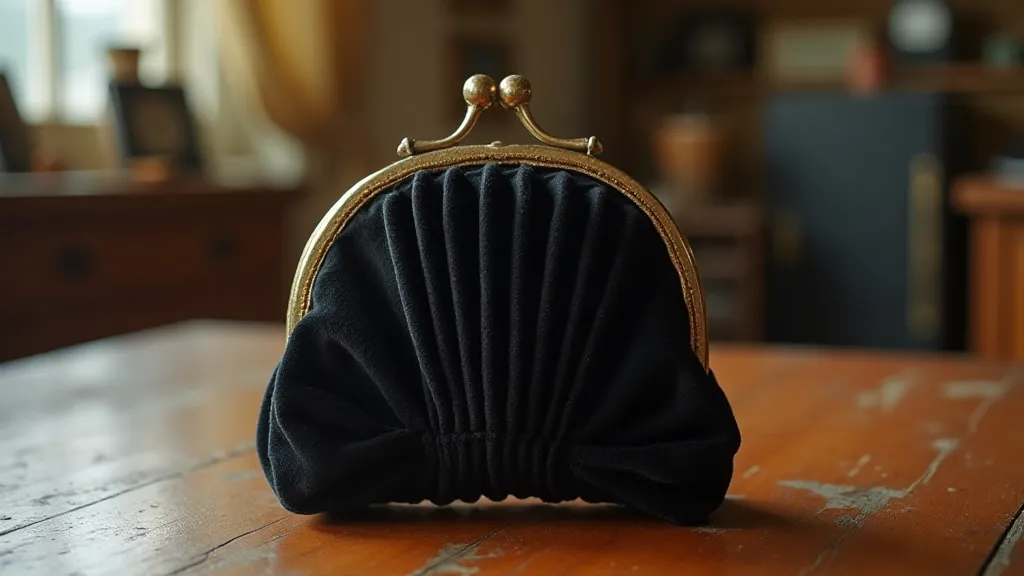
Interestingly, the rise of plastic and synthetic materials in the mid-20th century often led to a simplification of form, favoring more geometric and often quirky shapes. These designs reflected a move toward a more modern and playful aesthetic. The shift in materials and design also reflected broader changes in manufacturing processes and consumer expectations. The rise of mass production led to a focus on efficiency and affordability, leading to simpler designs and more readily available materials.
Restoration and Respecting the Past
When collecting vintage coin purses, it’s tempting to restore them to pristine condition. However, it's important to remember that the imperfections—the faded colors, the slightly worn edges, the loose beads—are often part of what makes them so charming and evocative. They tell a story of time passed, of lives lived. A little gentle cleaning and careful mending can preserve a coin purse's beauty, but aggressive restoration can erase its history. The beauty of these objects lies not just in their aesthetic appeal, but also in the marks of time that they bear. These imperfections are not flaws, but rather testaments to their history and the lives they have touched.
For example, loose beads can be carefully reattached, and small tears can be mended with matching thread. However, replacing a faded color or smoothing out worn edges is often best avoided. The goal isn’t to make the coin purse look brand new; it’s to preserve its integrity and ensure that its story can continue to be told. It’s a delicate balance between preservation and authenticity. The objective is to stabilize the object and prevent further deterioration while maintaining its original character and historical significance.
The Silent Witnesses
Collecting vintage coin purses is more than just acquiring beautiful objects; it's about connecting with the past, about appreciating the artistry and craftsmanship of earlier generations. It’s about imagining the lives of the people who carried these purses, the places they went, and the stories they held. Each coin purse is a tiny window into a forgotten world, a portrait in miniature, waiting to be rediscovered. Sometimes, the most profound insights come from simply holding these objects and allowing our imaginations to roam freely. The connection to the past is palpable, a reminder of the shared human experience across generations.
I often wonder about the woman who owned the little cream-colored satin pouch with the faded pansy. Was she a gardener? A teacher? A dreamer? I'm unlikely to ever know the answers, but holding that coin purse, feeling the softness of the satin, admiring the delicate embroidery, I feel a sense of connection, a shared appreciation for beauty and grace that transcends time. The stories these objects hold are often lost to history, but their presence allows us to contemplate the lives and aspirations of those who came before us. The power of suggestion and the richness of imagination allow us to fill in the gaps and create our own narratives, enriching our understanding of the past.
Consider this - many of these purses offer a glimpse into the intimate lives of women throughout history. To better understand how these objects can reveal secrets of a past era, you might find The Silent Witnesses: Coin Purses and the Women Who Carried Them particularly illuminating.
